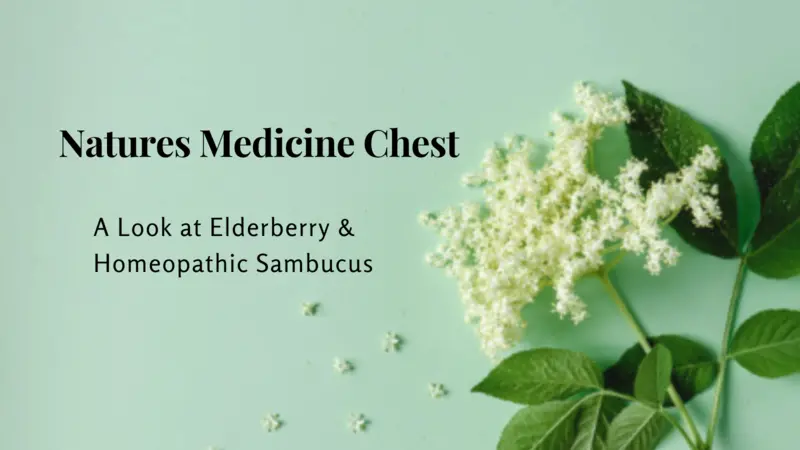

Complementary and Alternative Medicine (CAM)

Complementary and Alternative Medicine (CAM)
Nature’s Medicine Chest: A Look at Elderberry & Homeopathic Sambucus
From syrup and wine to gummies and supplements, everyone today knows something about elderberries. However, knowledge of their medicinal power traces as far back as ancient Rome. Hippocrates, the “father of medicine,” adoringly called the tree that bears this fruit his “medicine chest” because he was so impressed by its endless benefits.
While elderberries are valuable for immune support, they’re not the only medicinal part of the plant. For example in homeopathy, flowers from the tree are prepared into a medicine to provide relief for common cold symptoms.
What Is Elderberry?
Sambucus nigra is the Latin name for a species of broadleaf fruit tree, commonly referred to as European or black elderberry. A native to Siberia, Japan, and most of Europe, it blooms in late spring to early summer producing delicate butter-colored flowers that grow in fragrant clusters. Once the blooms fade, green berries develop and ripen over time into a deep, rich purple that signals they’re ready for harvest.
Elderflowers, just like their berry counterparts, are edible and rich in antioxidants, polyphenols, and many other bioactive compounds studied for their immune-boosting properties. They’re also a popular flavor for making liqueurs, cocktails, vinegars, and cakes.
Elderflower Benefits in Homeopathy
The homeopathic medicine Sambucus nigra is made from a preparation of elderflowers, which are first gathered and processed into tincture before being medicinally transformed. It’s used to relieve colds with a painful cough, nasal congestion, hoarseness, or loss of voice.*
You can find Boiron Sambucus nigra as a “blue tube” single medicine and a bonus pack of three tubes for the price of two.
*Claims based on traditional homeopathic practice, not accepted medical evidence. Not FDA evaluated.
This article was originally published on and has been sponsored by Borionusa.com.


 By
By



